Obama’s Coalition of the Unwilling
President Barack Obama dramatically changed course twice on May 13 when he announced he would not release photos of American military personnel “abusing” detainees, reversing the Pentagon’s statement on April 26 that it would comply with a court order -- with the president’s own prompt and emphatic support for release.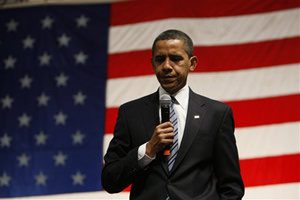
President Barack Obama dramatically changed course twice on May 13 when he announced he would not release photos of American military personnel “abusing” detainees, reversing the Pentagon’s statement on April 26 that it would comply with a court order — with the president’s own prompt and emphatic support for release. And thus the second reversal: the president would “do business” in Washington in the “old way,” and with the in-your-face exercise of presidential actions reminiscent of his predecessor. In returning to old ways, Obama has done business with the most unreliable of his “friends” and the worst of his enemies.
The acts and photos are uncontested, as the president and an appellate court clearly acknowledged. Now, Obama has directed his in-house counselor, Gregory Craig — ever the lawyer for the situation — to prepare a legal opinion justifying a political decision, and to prepare for an appeal of the lower court order.
The president’s announcement was brief, but the always-present anonymous official offered in a statement: “The president would be the last to excuse the actions depicted in these photos. That is why the Department of Defense investigated these cases and why individuals have been punished through prison sentences, discharges, and a range of other punitive measures.” But we know nothing of these investigations or the scope of the punishments. In previous similar cases of prisoner abuses, we know that military commanders reviewed — and moderated — such punishments. The president should release this information.
Those opposing the release of the photos represent a sizable community. But the vocal opposition came largely from those seemingly repudiated last November. President Obama is in the White House in part because another, undoubtedly larger, community is outraged by torture and abuse of “detainees.” Now the president has stopped the release of the photos and is preparing to appeal the lower court’s ruling to the Bush-Cheney friendly confines of the Supreme Court. How ironic that the Obama administration must now appeal to this Supreme Court.
In its decision, the Court of Appeals for the 2nd Circuit ruled that “it is plainly insufficient to claim that releasing documents could reasonably be expected to endanger some unspecified member of a group so vast as to encompass all United States troops, coalition forces and civilians in Iraq and Afghanistan.” But domestic coalition forces opposing the release of the photos found it sufficient to merely assert such a claim.
The president has followed the wishes of Sens. Joseph Lieberman, I-Conn., and Lindsay Graham, R-S.C., former Vice President Dick Cheney and his military commanders. He has invoked the worst excesses of the Bush-Cheney “war on terror” metaphor, agreeing with those who contend that release of the photos will only encourage more terrorist attacks on American military personnel.
Lieberman and Graham, John McCain’s enthusiastic supporters in the 2008 campaign, wrote to the president on May 9, urging him not to release the damning photographs. “The release of these old photographs of past behavior that has now been clearly prohibited will serve no public good, but will empower al-Qaida propaganda operations, hurt our country’s image, and endanger our men and women in uniform,” the senators wrote. A few weeks earlier, Obama firmly — that is not an unfair characterization — promised to abide by the appellate court’s ruling. Quick story: Lieberman and Graham won.
Lieberman, Graham and Cheney like to use a World War II analogy to make their point. They worry that the enemy will make “propaganda” use of the photos to damage the U.S. “Propaganda” is a charged word, conjuring images of the Nazis’ media blitzes to make their points. Lieberman and Graham probably had the ghost of Joseph Goebbels in mind, launching full-blown tirades about American “war crimes” and “brutality.”
Propaganda, according to Webster, is “the spreading of ideas or information deliberately to further one’s cause or damage an opposing cause.” Propaganda is no exclusive tool of hated regimes. What did Sens. Lieberman and Graham think they were voting for when Congress authorized untold billions of dollars to support the Voice of America, the U.S. Information Agency, Radio Free Europe and Radio Marti? For six decades, “soft power” propagandizing has taken place; we call it the Fulbright Program.
For seven years, Lieberman and Graham enthusiastically and uncritically provided powerful support for George W. Bush’s deceitful wars under that convenient umbrella of “the war on terror.” Dick Cheney now is their de facto commander-in-chief, diligently fighting rear-guard actions, staving off criticisms of any means they deemed necessary to conduct their larger war. Cheney had reliable allies, as Gen. David Petraeus and his commanders pressured the defense secretary to lobby the president and Robert Gates dutifully complied. .
Cheney is ever-anxious to have his “I-told-you-so” on the record in the event of another 9/11 attack. Just as we cannot disprove his contention that he and Bush had kept us safe from attack (ignoring 9/11, of course), so we cannot prove that there will not be another attack. For now, Cheney is content to offer the facile, doomsday language that release of the photos depicting abuse would “increase the risk of another attack.”
Cheney’s coalition shamelessly played the “support the troops” card. Liz Cheney faithfully spoke for her father and flayed the Obama administration in a Fox TV interview. “And President Obama has a lot of sort of rhetoric about support for our military families and support for our men and women who are fighting overseas,” she said. “But if he really cares about them, he wouldn’t be making such an effort to release photos that show them in a negative light.” Must we assume military families support prisoner abuse?
The former vice president and his allies have readily played the “fear card,” and play on fears and insecurities that the Democrats lack the unnecessary toughness on military and security matters. On this score, Obama acts as if he has one hand tied behind his back.
The administration is under a court order to release the documents. On Cheney’s watch, any prospect of judicial interference with his “war on terror” was not tolerated. David Addington, John Yoo and Jay Bybee readily invoked their absurd unitary theories of presidential power and ignored such a court order. And that would have been the end of the story, with the media meekly submitting, and Congress rendered impotent.
Lieberman and Graham are classic servants of power, hardly capable of speaking any truth to power. Like most of their colleagues, they are opportunists or off-the-wall on some ideological mission. Do Lieberman and Graham think photos lie? Have they been fixed, tampered with, or cropped in any way? Can they be true? The senators assume “propaganda” to be a deliberate distortion of the truth, and that propels al-Qaida’s “propaganda,” as they contend. But truth is the issue here, not some enemy’s “propaganda.”
Try as he might — note the Afghanistan measures — the president cannot appease his enemies. They have prevailed over the abuse photos, and he folded. Soon, they will contemptuously deride him as a “flip-flopper,” with an intended portrayal of his weakness. What should the president’s friends say?
Stanley Kutler is the author of “The Wars of Watergate” and other writings.
Your support matters…Independent journalism is under threat and overshadowed by heavily funded mainstream media.
You can help level the playing field. Become a member.
Your tax-deductible contribution keeps us digging beneath the headlines to give you thought-provoking, investigative reporting and analysis that unearths what's really happening- without compromise.
Give today to support our courageous, independent journalists.
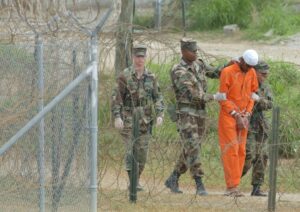
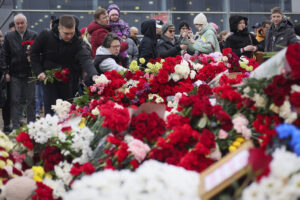
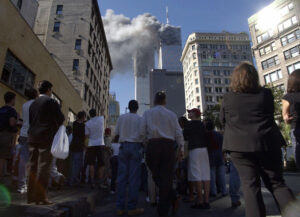
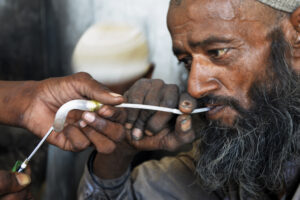
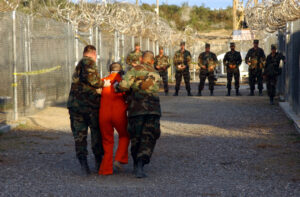

You need to be a supporter to comment.
There are currently no responses to this article.
Be the first to respond.